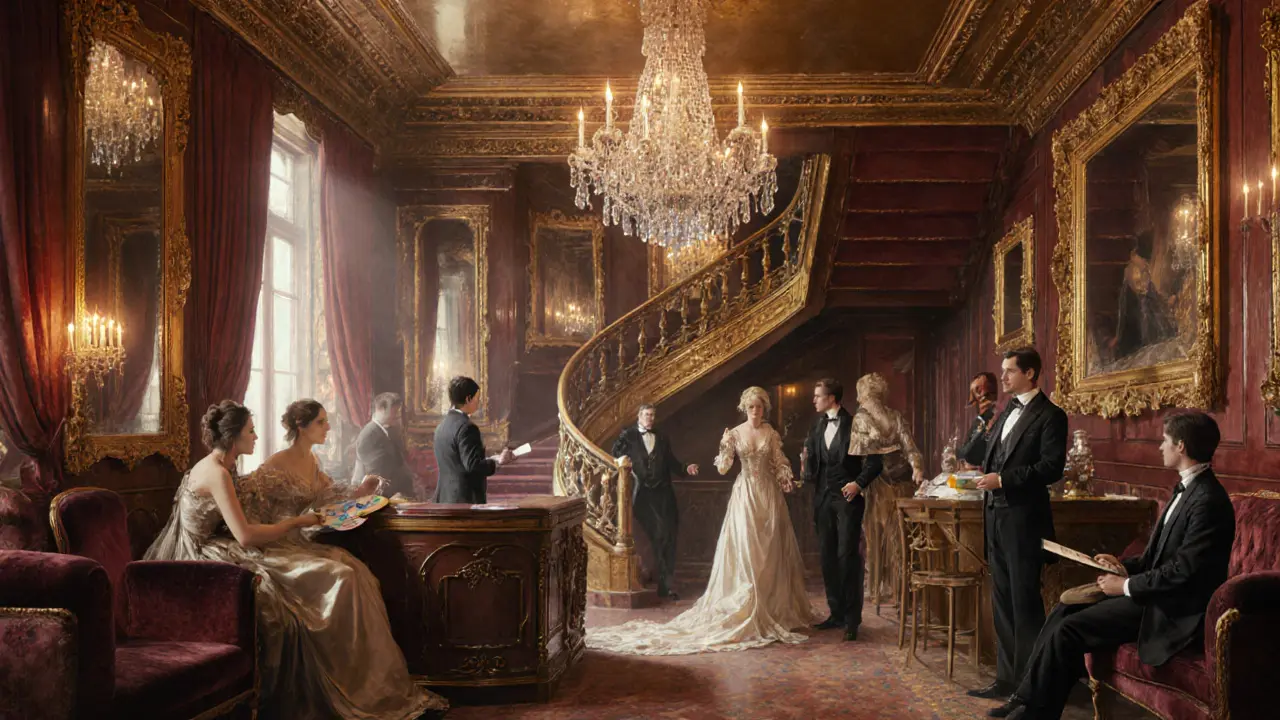When you hear Paris escort industry the network of independent and agency‑affiliated adult service providers operating in France’s capital, you probably picture glittering champagne bars or clandestine back‑rooms. In reality, it’s a living history that mirrors the city’s social shifts, legal battles, and tech breakthroughs.
From the Belle Époque to the Roaring Twenties
The story really kicks off in the late 1800s. Paris was buzzing with the Belle Époque-art, fashion, and a booming nightlife. High‑end brothels, known as maisons closes, sprouted near the famous Moulin Rouge and the Champs‑Élysées. These venues were more than just places for paid intimacy; they were social hubs where artists, writers, and aristocrats mingled. The French government, at that time, regulated these establishments through a licensing system that required regular health checks-a progressive stance compared to many neighboring countries.
By the 1920s, the glamour started to fade. The aftermath of World War I brought economic strain, and the French authorities began to clamp down on visible prostitution. The 1925 law, part of the broader Code de la santé publique, introduced stricter zoning rules, pushing many operations underground. Yet the demand persisted, and the industry adapted by moving into private apartments and secret hotel rooms.
Mid‑Century Shifts and Legal Crackdowns
The post‑World War II era saw a mix of liberal attitudes and heightened enforcement. In 1946, the French Penal Code (Article 225‑4) criminalized the “exploitation” of prostitution, targeting pimps and traffickers while still allowing adult consent. This nuance created a gray area where independent escorts could operate legally, but any third‑party involvement became a punishable offense.
The 1970s and 1980s introduced a new wave of feminist activism. Groups argued that prostitution was a form of exploitation, prompting the 1975 “Puteau‑Putois” debate in the National Assembly. Although the law didn’t change dramatically, public perception shifted, and many high‑end houses closed their doors, giving rise to a more discreet, street‑level market.
The Digital Turn: 2000s to Today
Fast forward to the early 2000s-technology rewrote the rulebook. Personal ads in newspapers gave way to internet forums, and by 2005, dedicated platforms like Escorts Paris and EuroGirls offered searchable profiles, ratings, and secure payment gateways. This democratized the industry: anyone with a laptop could list services, set rates, and verify clients without needing a madame.
Mobile apps further accelerated change. While mainstream dating apps like Tinder aren’t strictly escort platforms, they became a back‑door for discreet arrangements. The rise of encrypted messaging (Signal, WhatsApp) allowed real‑time negotiation while protecting privacy.
One of the most significant legal milestones came in 2016, when France passed the “Law to Strengthen the Fight Against the Prostitution System”. The law outlawed customers from paying for sex (the so‑called “client law”) and increased fines for solicitation. The intent was to reduce demand, but many escorts reported being pushed further into the shadows, with fewer public venues and more reliance on online anonymity.

Regulatory Landscape After 2016
Since 2016, the Paris escort ecosystem has been navigating a delicate balance. On the one hand, the client law lowered street visibility; on the other, the government launched social‑exit programs offering vocational training. The Mairie de Paris partnered with NGOs to provide counseling, but critics argue the services are under‑funded.
COVID‑19 added another layer of disruption. Lockdowns in 2020 forced many to pause physical meetings, prompting a surge in virtual services: cam shows, private video calls, and even AI‑generated companions. A 2022 survey by the French Institute of Sociology found that 38% of Paris‑based escorts added at least one virtual offering to survive the pandemic.
Future Outlook: AI, Virtual Services, and Regulation
So, what’s next for the Paris escort industry? Experts point to three converging trends.
- AI‑enhanced interactions. Advances in deep‑fake technology and conversational AI are already being used for virtual companionship. While regulators worry about consent and authenticity, many escorts see a supplemental income stream that carries no health risk.
- Blockchain‑based escrow. To address payment fraud-a common complaint-new platforms are experimenting with smart contracts that release funds only after both parties confirm satisfaction.
- Policy evolution. The current French approach is under review. A 2024 parliamentary committee suggested a hybrid model: de‑criminalize the client while imposing strict health and safety standards, similar to the Netherlands’ “tolerated zone” system.
Until a new legal framework lands, adaptation will be the key. Independent escorts are likely to keep leveraging tech for privacy and efficiency, while agencies might focus on niche experiences-luxury travel, role‑play, or themed events that can't be replicated online.
Quick Takeaways
- The Paris escort industry started with regulated maisons closes during the Belle Époque.
- Mid‑20th‑century laws targeted exploitation but left room for independent work.
- Internet platforms in the 2000s democratized access and shifted operations online.
- The 2016 client law pushed services underground, increasing reliance on digital anonymity.
- Future growth will likely hinge on AI, blockchain payments, and evolving French policy.
Comparison of Past, Present, and Future Eras
| Aspect | Past (Belle Époque‑1940s) | Present (2000‑2025) | Future (2030+) |
|---|---|---|---|
| Legal status | Licensed maisons closes; regulated health checks | Independent work legal; client law penalizes buyers | Potential hybrid model with regulated client‑payment systems |
| Typical venues | Luxury hotels, private mansions | Online platforms, private apartments, virtual rooms | Virtual reality lounges, AI‑driven companion pods |
| Key technology | Telephone, printed ads | Websites, mobile apps, encrypted messaging | Blockchain escrow, AI avatars, VR environments |
| Client base | High‑net‑worth tourists, elite locals | Broad spectrum-from business travelers to digital nomads | Global remote clients seeking immersive experiences |
Frequently Asked Questions
How has the legal environment for escorts changed in Paris over the years?
Early on, the city permitted licensed brothels under strict health regulations. Mid‑century laws targeted exploitation but left solo work legal. The 2016 client law criminalized buyers, pushing many services online. Ongoing debates may soon introduce a regulated client model.
What role did the internet play in reshaping the Paris escort market?
Websites in the early 2000s offered searchable profiles and secure payments, eliminating the need for traditional madames. Mobile apps and encrypted chats later added real‑time negotiation, anonymity, and global reach, making the market more accessible and competitive.
Are virtual escort services a temporary pandemic fad?
Virtual services surged during lockdowns, but data shows 38% of escorts kept at least one online offering after 2022. With AI companions and VR lounges on the horizon, virtual interactions are becoming a permanent revenue stream.
How might blockchain affect payment security for escorts?
Smart‑contract escrow can hold a client’s funds until the service is confirmed, reducing fraud and charge‑backs. Early pilot platforms in Paris report a 22% drop in payment disputes after implementing blockchain escrow.
What future regulations are being discussed for Paris escorts?
A 2024 parliamentary committee suggested de‑criminalizing clients while imposing strict health checks and licensing for venues, mirroring the Dutch tolerant‑zone approach. The proposal aims to balance safety with personal freedom.
